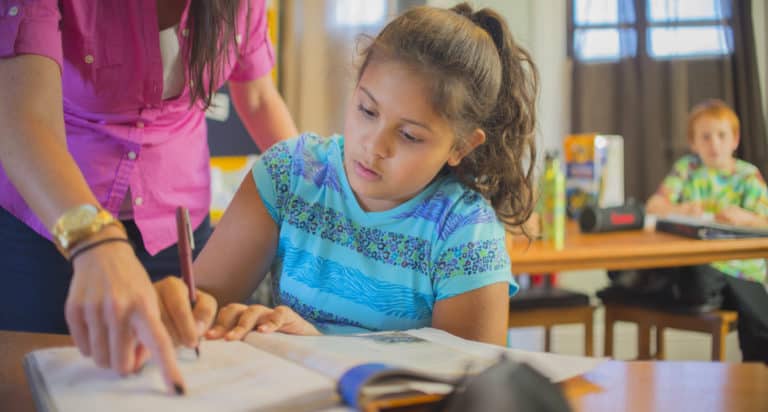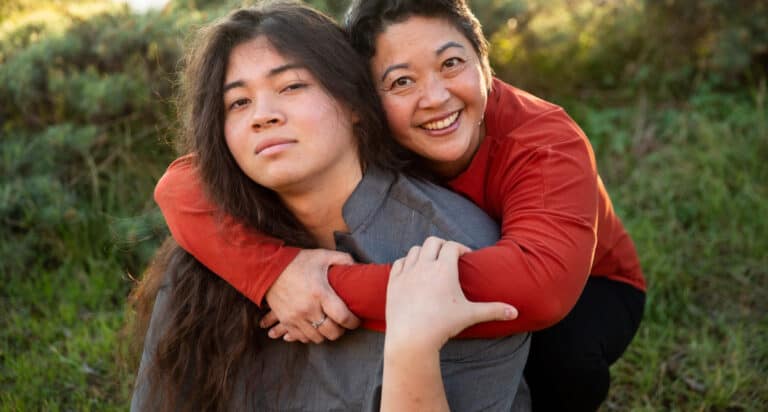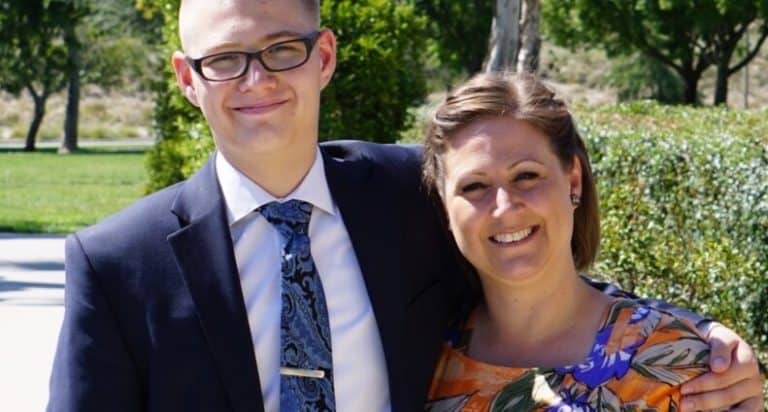Death and grief are hard subjects for all of us to understand. We are baffled by the sudden tragic death of a young person or peer. We are unmoored by the loss of a parent or family member we thought would always be here. As adults, we’re expected to process these very painful moments, and to make sense of them for our kids – especially our teens, from whom it is difficult to hide the truth and magnitude of a situation.
We wrestle with how to explain the fragility of life because we don’t fully get it ourselves and because our teens are still so naive. They are young and full of promise, with seemingly endless days sprawled ahead of them. To tell them about the death of a loved one or the parent of a peer is jarring.

Teaching teens about death and loss is important
It momentarily slams the brakes on their relatively carefree lives. Making them stop to let the reality settle and helping them to grasp the gravity of the situation is hard, but it’s crucial. Teaching our teens how to handle these difficult moments, and how to be present and supportive to those who are grieving is one of the most crucial life lessons we can impart.
We might be inclined to try and shield them from the pain, but of course, we can’t. Sadness, loss, and grief come to everyone, at one point or another. The ability to connect to another’s pain, to know how to help shoulder the burden, how to truly “be there” for someone who is hurting – these are gifts of spirit that every teenager should posses. It’s our job as parents to walk them through it, and to teach by our own example.
Recently, our faith community experienced several losses, all parents of teens. Some of these folks were young and healthy, others older and unwell, but every loss hit close to home as my 16-year-old son and his friends were required to attend funerals and memorials, and to visit with their peers as they sat shiva.
In one situation, my son’s dear childhood friend, a girl he has known since he was two lost her father. I told him about the loss, which was not entirely unexpected or sudden, and asked him to join me and my husband at the funeral and shiva. I contacted his school to let them know he would be leaving class early, gave him the address of the chapel, assured him that what he was wearing was appropriate. I wanted him to understand that it was important for him to be there for his friend, to show his love and sympathy, and to listen to the kind words of remembrance that would be shared about his friend’s father, a man who had always been kind to him.
It was an emotional service, and his childhood friend bravely spoke about her father and the tremendous loss she was feeling. She is an only child, and was exceptionally close to her father. It was a sad and somber afternoon, but also a time to celebrate a long, extraordinary life of accomplishment. It gave the people who loved the deceased a chance to tell stories about him, to express their love and to properly say goodbye.
Teens learn to navigate the rituals surrounding death
Funerals, memorial services and celebrations of life provide opportunities for the bereaved to be surrounded by friends and loved ones, to share their burden, and to speak loving words of remembrance about the deceased. These rituals are important and serve a purpose in the grieving process. As caring, empathetic human beings, the ability to know how to navigate this territory, how to dress and behave, how to express sympathy and show genuine support are some of the most important skills a person can possess.
I want my kids to have the gift of human connection, the confidence to publicly express affection, and the ability to recognize their own vulnerability and fear. I want to teach them by word and example how to truly “show up” for others. In an era when the death of a famous athlete or celebrity prompts teens (and adults) to post photos, quotes and “RIP” on social media as a way of showing respect, it’s important for us to dig a little deeper. We need to help kids make sense of death and dying, and to remind them that this isn’t simply a social media “moment.” A person has left this earth, and those who mourn him or her are grieving.
At the conclusion of that recent funeral, our son greeted his friend and her mother. My son is over 6 feet tall, and his friend is probably under 5 feet. He embraced her and she collapsed into his arms, sobbing. I’m sure that was an uncomfortable moment for my son. Such intimate contact with a girl, a friend he has known since babyhood, might have felt awkward but he stood there, embraced her and let her cry into his chest.
I’m sure he mumbled words of comfort. I hope he knew what to say, but it truly doesn’t matter what he said. He was there, he was present and he opened his arms to a friend who was hurting. It was poignant not because of the usual parenting trope: they are getting so big, time flies, etc. but because I knew that this was the beginning of a difficult passage into adulthood, a journey that will include many emotionally painful and awkward moments. My son is just beginning to understand how important it is to know how to give and accept comfort and support. I can protect him from many things (or try to), but sadly, I know I can’t shield him from this reality. He will need these skills, later if not sooner, and throughout his life.
Later that evening, I accompanied my son to the shiva, a Jewish ritual of gathering at the home of the bereaved to sit, socialize and allow the family to share stories and receive comfort. It is designed to ensure that grieving families don’t go home to an empty house after a funeral and sit alone, hungry, thirsty and bereft. It is meant to ease the difficult passage into a stage of mourning that will likely last a long while. It’s important to know how to enter a home in mourning, hang up your coat and, with compassion and empathy, approach the people who have experienced a heartbreaking loss.
We cannot protect our kids from loss
Knowing a few words to say, knowing when to stay silent, being open to an embrace or tears – these are all of the tricky things you learn how to navigate over time. My son and I walked into the apartment and he immediately saw classmates, old friends from nursery school who had also come to support their friend. He fell in with this small group, and joined a larger group of high school friends sprawled on the couch in the corner of the living room. His grieving friend was perched in the center, with girls stroking her hair and holding her hands.
To look at the scene from above, without context, you might have thought it was a casual teen party. Kids were chatting, laughing, showing each other funny things on their phones. They were being teenagers. They were navigating this awkward, sad event in the best way they knew how. And my son’s bereaved friend seemed more than fine with it. She was smiling, she was clinging to her friends, she was comforted – which, again, is the whole point. This was their way of showing up, and the adults in the room likely envied them their ability to handle the event with ease and authenticity. I certainly did.
The longer I live, the more I understand that life is hard, and sad days happen with startling regularity. Our ability to recognize and appreciate the good days is important to our mental health and overall happiness. Our capacity for empathy, our resilience in the face of hardship and our ability to connect with others in their pain is just as critical.
I never want my kids to shy away from difficult situations or people who are hurting. I want them to be able to “flex” their empathy muscles and have the courage to lean in, to offer a shoulder and any help they can provide. That’s the definition of being connected. Happy and sad, joyful and hurting, celebrating and grieving – all of it. This is the adult experience, this is life.
I hope I’m preparing my kids for all of it.
You Might Also Want to Read:









